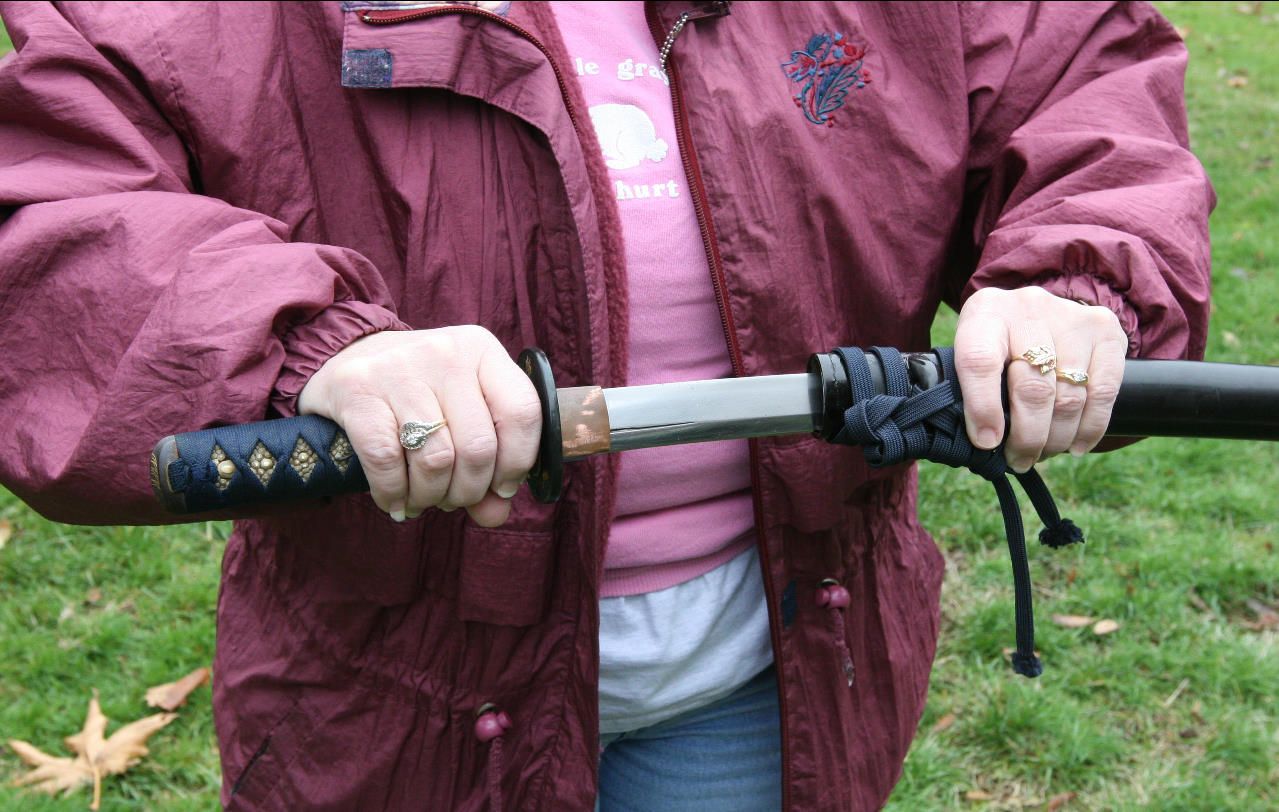Examining a Japanese Sword

Looking at a Japanese Sword
Always ask permission of the owner if you want to examine a Japanese sword. If you are unfamiliar with the proper way to view a sword, then let the owner guide you through the steps. There are several things that can go awry if you do not use proper care when handling a sword.
Always hold the cutting edge of the sword pointed up. With the left hand, knuckles up, hold the saya or scabbard in front of you. First check if there is a button release that would hold the blade in place. If one is present, press the button. With your right hand grasp the hilt. If a light tugging on the hilt does not remove the sword, place your two thumbs in a position where they push against each other to break the resistance that holds the sword in the saya. Do not strong arm the sword as it may break free and will be out of control. If these actions do not work, request help from the owner.
Japanese swords are extremely sharp. This is not just a casual warning. Japanese swords are extremely sharp. Never ever test the sharpness by touching the blade. Japanese tradition mandates that touching the blade is reserved for the owner of the blade. High carbon blades can rust easily when body acids come in contact with the metal. The other reason not to touch the blade is that these swords are extremely sharp. A cut from one of these swords can definitely ruin your day.
Once the sword starts to release from the saya, draw the sword completely out of the saya in one motion. The edge should be straight up and never down or sideways. The blade should also ride on the back of the sword (mune) of the saya so that the blade does not cut the saya. The saya is made of magnolia wood (Ho) and can be damaged if the edge cuts into the wood. Remove the sword in a slow but steady motion.
Once removed there is much to look at and examine in the blade. The length, width and shape all play a part in the sword. These factors can determine when the sword was made. The degree of curvature (sori) also can reveal the period that the sword was made as well as the point (Kissaki) and its style. The grain (hada) of the steel, as seen in the examination, will also reveal time lines as to when it was made. The temper line or hamon is also a distinctive feature to the sword. As you examine the sword, you will begin to appreciate the beauty of an item that can date back hundreds of years.
When you are done examining the sword, place the point in the saya (edge upward) and let the mune ride back into the saya. Make certain that the sword is fully engaged into the saya. Enjoy the experience of a Japanese sword and above all be careful.
